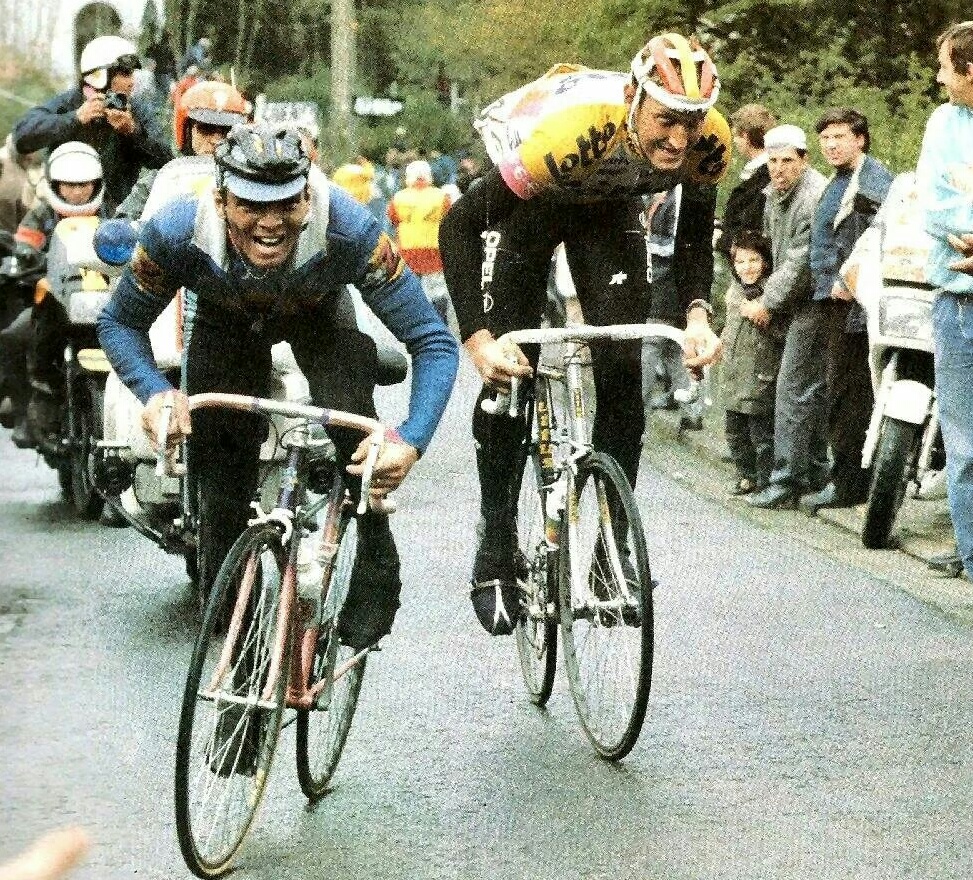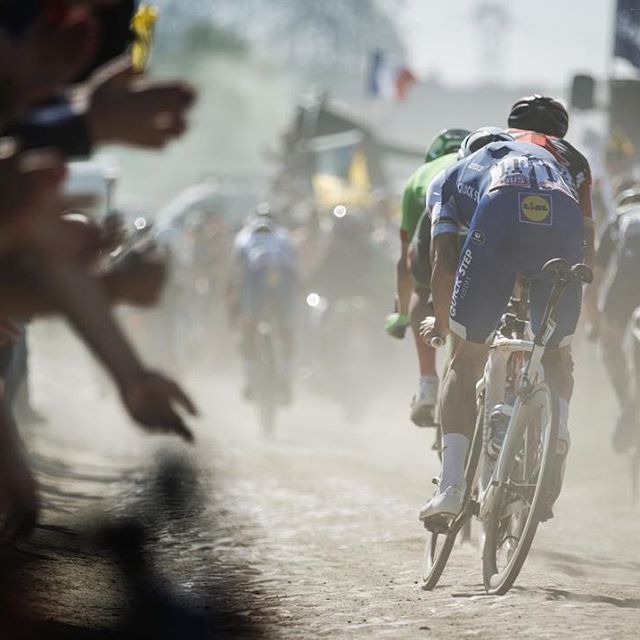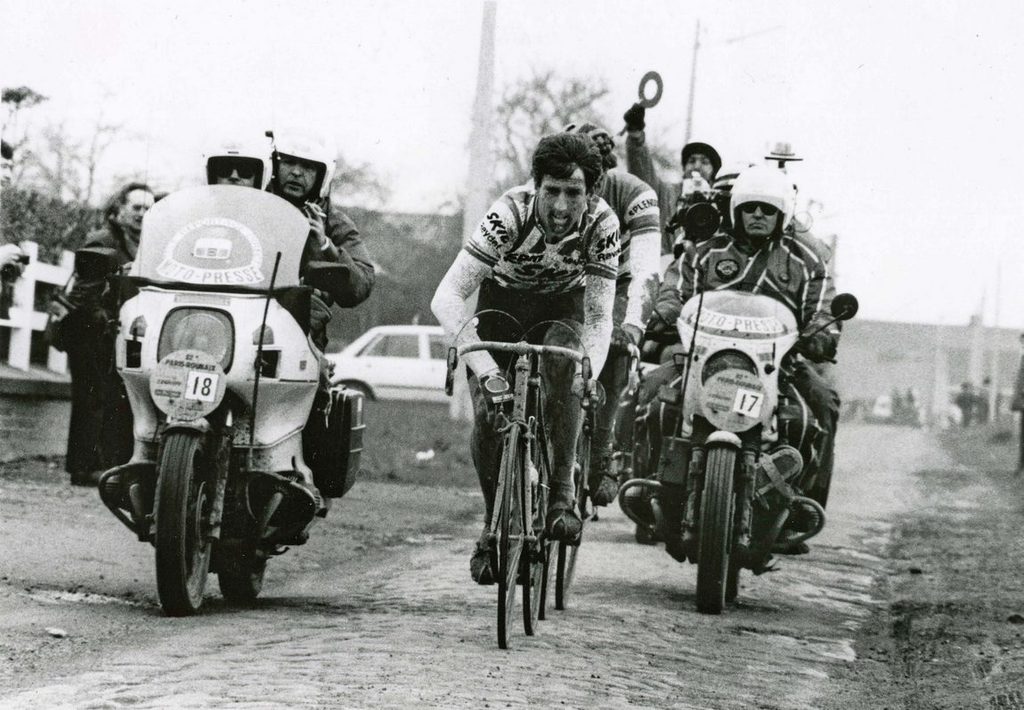De Vlaamse Disco
I’m not a good dancer. I’ve come to this conclusion not through study but through ridicule and injury. Apparently it demands the ability to exhibit control over your limbs in some rhythmic capacity where “rhythmic” is defined both as “not chaotic” and “not stationary”. To make matters worse, this extends to all your limbs, not just one or two; you aren’t allowed to just wave one arm about because that’s all you can concentrate on. Like most men, I function with a two-item queue; I’m not a multitasker. This, I believe, is the reason why women are better dancers than men are.
The seventies is when male dancing went mainstream in the form of “disco”. If you look closely, you will notice that disco moves involve moving no more than two appendages at once; most moves can be done with half that. Convincing women that this is “dancing” is the Male Gender’s most significant accomplishment since Einstein discovered the Theory of Relativity. Male dancing has not evolved since, if the local pub is anything to go from.
Prior to the invention of the compact crank, climbing was good practice for disco dancing: if the gradient was anywhere near respectable, you could ponder long and hard about the one leg that was doing all that pushing right at that moment. Even the climbers like Charly Gaul who were accredited as “spinners” came nowhere close to modern climbers’ cadential sensibilities where cols are gobbled up at 110+ rpm.
For the book signing event we held for The Rules in NYC, @Gianni loaned me his trusted steed, Bella, whom he keeps back on the East Coast. This lovely lady is clad in old school Campa and the gritty 42×23 low gear to go with it. He giggled as he watched me rise out of the saddle to do Le Disco over the stout ramps along the hills of New Jersey.
At the risk of sounding like an old grumpopatamus (the slightly less charming relation to the hippopotamus), climbing for us big blokes used to be about breathing and pushing on the pedals (that’s our two-item queues at capacity) until the eyes went dark, at which point you kept breathing and pushing until you got to the top and went down the other side like you trusted your tires more than you appreciated physics. Now its all about “cadence” and “heart rate” and “wattage” and “not being fat” and probably a few other things that I disagree with that I haven’t even thought of.
Not that I have anything against spinning; I used to be a “spinner”. Back in the 80’s and 90’s, I was always the spinner in the group, riding along at 80 or 90 rpm. These days, I’m the “masher” in the group, riding along at 80 or 90 rpm. This is one more reason why I love Flanders; I’ve never seen a Flandrian spin, unless it was the 53×11. On the one occasion I caught Johan Museeuw riding a compact (testing it, he was), his only remark was that the 50T wasn’t big enough for climbing.
The Flemish riders are all about doing De Vlaamse Disco as they mash a monster gear up some unimaginable cobbled grade. I am given to understand Boonen trains by riding the Koppenberg in the 53. That’s my kind of climbing; more stubborn than brains, more burnt cartilage than knees.
That’s what Merckx invented Advil for.



Just out of curiosity: has anyone tried riding with a standard, double chainring in front (say: 52-45, for example), and using an old-fashioned chain tensioner to combine it with a fixed cog on the rear? Would that even be possible?
@antihero
Just out of curiosity: has anyone tried riding with a standard, double chainring in front (say: 52-45, for example), and using an old-fashioned chain tensioner to combine it with a fixed cog (e.g. 17) on the rear? I.e.effectively creating a two-speed fixie. Would that even be possible?
Oops, I think I just broke the Internet. Sorry guys.
@ErikdR
No, won’t be possible. There’s no chain-tensioner strong enough to resist back-pedaling.
@tessar
Terrible chainline, too. This is why flip-flops exist. As a plus, you get to pretend you’re Tullo Campagnolo in the Alps when you stop to change gears.
@Erikd
As @tessar points out, a chain tensioner only works on the slack side of a drivetrain and on a fixed gear that’s neither.
You can run a double chainring with a double fixed cog like a Surly Dingle, but you would need to keep the total teeth of each pair pretty close (48:16 / 46:18) depending on how much room you have in the dropouts or track ends. This still means stopping, loosening your rear wheel, moving the chain and retensioning to change gears, so a clunky solution with little benefit over a flip flop hub. There is a Sturmey Archer 3 speed fixed hub but it adds at least a kilo in weight plus a cable and shifter.
I agree there’s some validity to the idea of riding fixed developing a smoother stroke, but I think the real benefit is in increasing comfort and power at a wider range of cadences.
@SamFromTex
Chainline is at the heart of making your fixed-gear safe, efficient, and adhere to The Principle Of Silence. On a derailleur bike, the chain obviously must change its angle relative to the bike’s horizontal axis. You’ve seen what happens when you cross-chain your drivetrain (i.e. the big front, big rear combo): everything gets noisy, shifting starts to suck, and you’ve got a much bigger angle drawn between your chain and the bike’s horizontal axis.
Not so on a fixed-gear bike. If you attempt to make the chain wrap around the cogs at even a slight angle, you’ll find the chain begins to skip before it seats upon the cogs. You’ll hear a telltale grinding if this happens – it sounds not unlike a hub with a bad bearing. Having your chainline off by as much a half a millimeter can put you into trouble territory. In bad cases, you can cause the chain to come off the bike while you’re riding. This is very, very, very, bad on a fixed gear, and almost always ends with blood being spilled.
This is one reason why many fixed gear riders still use square-taper bottom brackets: it’s easy and cheap to swap them out for a different axle length if you need to move your chainline around a bit.
@antihero @tessar @SamFromTex Thanks for all the excellent info, gents – highly appreciated. (it’s always a pleasure to read posts by people who clearly know what they are talking about – especially when I personally, and just as clearly, do not.)